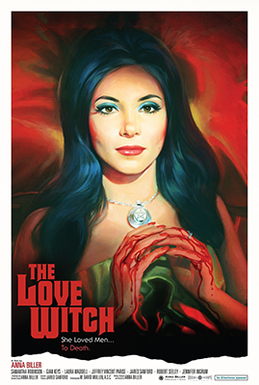
| Director(s) | Karyn Kusama |
| Principal Cast | Megan Fox as Jennifer Amanda Seyfried as Needy Johny Simmons as Chip |
| Release Date | 2009 |
| Language(s) | English |
| Running Time | 102 minutes |
When this movie first came out over a decade ago, I thought it was going to be some schlocky exploitative film based on the advertising. Watching the movie proved to be a completely different experience and I remember feeling pretty satisfied with what I saw. As you can imagine I was shocked when I saw the low Rotten Tomatoes score. Thankfully, after a recent re-watch, I’m proud to say my love for the movie has only appreciated over the years and I’m confident that if it came out today, it’d probably end up doing great. At least I hope it would. If anything this is more proof that the Tomato Meter only matters if you let it matter.
Needy, a reticent nerd, realizes that her super popular BFF, Jennifer, has transformed into a man-eating succubus, and desperately tries to stop her carnivorous ways. The movie picks up on Needy in a mental institution, explaining the events of Jennifer’s possession and her subsequent rampage. This framing mechanism gives the story a sense of mystery and allows for some fun “breaking the 4th wall” moments. Needy is so bad ass and resolute in this “current” timeline and so reserved and shy in the story she narrates. You want to why and she tells you in an incredibly entertaining way. The way the framing mechanism bookends certain moments makes it clear the story is focused on Needy’s journey, not her destination. Once the movie “ends” you appreciate the way the whole story was structured a lot more.
Despite being a horror movie and containing some genuinely chilling moments to experience and think about, the movie stands in out in just how funny it is. Yes, there’s a few moments where the humor and horror clash, but I think for the most part the two elements accentuate one another. The movie has a good blend of parodies of cliched young adult humor and some genuinely dark humor with a distinct feminist blend. I found myself laughing at the more obvious jokes while appreciating the more subtle-not-so-subtle social commentary.
The idea of stopping a succubus isn’t new, but the movie mainly utilizes its supernatural aspect to navigate a litany of (especially at the time of the movie’s release) unexplored ideas as opposed to just playing it cool as a creature feature. Somehow the story explores toxicity in relationships, the way women are stripped of agency and forced to play disparate social roles, and the way tragedy is exploited. The small town setting is taken full advantage of to make these ideas even more pronounced.
Fox kills it as the lead. She feels like a caricature of what people actually thought/think about her and nails the air-headed, egotistical, narcissistic pretty girl archetype. After her transformation into bloodthirsty succubus, she manages to ramp her annoying qualities up a notch which lends to some genuinely funny moments. Seyfried is great as the nerdy shy friend who’s slowly forced into becoming more proactive as things get more and more out of control. The energy they give off is infectious and jumps off the screen.
At a surface level, the two have almost nothing in common with the former acting in service of the latter since their childhood. It’s a relatable relationship dynamic that I haven’t seen explored a lot, let alone in such depth and nuance. They may be “BFFs”, but as the film progresses the parameters of what that relationship really means and entails become clear, faults and all. The romantic tension between them is also teased and stretched in ways that not only feels well justified thematically but feels natural and for the most part non-exploitative. Their respective interactions juxtaposed with the almost nonchalant indifference Jennifer treats her victims with gives you a lot to think about and does a good job humanizing our monster in disguise. Yes, there’s a few sexually charged scenes, but the movie’s focus is on the relationship underneath the physical exchange, not the exchange itself.
While I love how Needy and Jennifer’s relationship is explored, certain supernatural elements of it feel unjustified/contrived. These moments feel like they exist just to create certain confrontations to push the story forward as opposed to naturally occurring plot events. Additionally, some side characters feel a bit too comical and one-note, so they stand out in contrast to the more well realized main characters. These problems never de
REPORT CARD
| TLDR | Jennifer’s Body tells the story of a girl desperate to stop her former best friend turned succubus from terrorizing the men of their small town. Somehow this highly slept on blend of horror, comedy, and dark humor manages to be even more socially relevant today than back in 2009 when it was released. Don’t let the trailers fool you. There’s more than meets the eye in this unapologetically fun movie. |
| Rating | 9.1/10 |
| Grade | A |
Go to Page 2 for the spoiler discussion.
Go to Page 3 to view this review’s progress report .


















